
USCGC Mesquite (WAGL/WLB-305) was the lead ship in the Mesquite class of seagoing buoy tenders operated by the United States Coast Guard. She served in the Pacific during World War II, and spent the rest of her Coast Guard career in the Great Lakes. She ran aground and was wrecked in December 1989 off the Keweenaw Peninsula in Lake Superior. She was scuttled nearby as a recreational diving attraction.

The Keeper class of coastal buoy tenders consists of fourteen ships built for and operated by the United States Coast Guard. The ships were launched between 1995 and 1999 and all remain in active service. Their primary mission is to maintain thousands of aids to navigation, both buoys and land-based. Their secondary missions include marine environmental protection, search and rescue, law enforcement, and light ice-breaking.

USCGC Bramble (WLB-392) is one of the 39 original 180-foot (55 m) seagoing buoy tenders built between 1942 and 1944 for the United States Coast Guard. In commission from 1944 until 2003 she saw service in Pacific, Caribbean and Atlantic waters as well as the Great Lakes. In 1947 Bramble was present at the Nuclear testing at Bikini Atoll and in 1957 a circumnavigation of North America involved a forced traverse of the Northwest Passage. After decommissioning in 2003 Bramble became a museum ship in Port Huron, Michigan. In 2018 she was sold to a private owner, who is preparing MV Bramble to repeat her historic 1957 circumnavigation of North America.

USCGC Maple (WLB-207) is a Juniper-class seagoing buoy tender operated by the United States Coast Guard. She was based at Sitka, Alaska for 16 years and is currently homeported at Atlantic Beach, North Carolina. Her primary mission is maintaining aids to navigation, but she also supports search and rescue, law enforcement, oil spill response, and other Coast Guard missions.
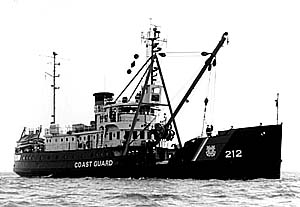
The United States Coast Guard Cutter Fir was the last lighthouse tender built specifically for the United States Lighthouse Service to resupply lighthouses and lightships, and to service buoys. Fir was built by the Moore Drydock Company in Oakland, California in 1939. On 22 March 1939, the U.S. Lighthouse Tender Fir was launched. She was steam driven with twin screws, 175 feet (53 m) in length, had a beam of 32 feet (9.8 m), drew 11 feet 3 inches (3.43 m) of water, and displaced 885 tons. Fir was fitted with a reinforced bow and stern, and an ice-belt at her water-line for icebreaking. She was built with classic lines and her spaces were lavishly appointed with mahogany, teak, and brass. The crew did intricate ropework throughout the ship. The cost to build Fir was approximately US$390,000. Fir's homeport was Seattle, Washington for all but one of her fifty one years of service when she was temporarily assigned to Long Beach, California when USCGC Walnut was decommissioned on 1 July 1982.

USCGC Elm (WLB-204) is a U.S. Coast Guard Juniper-class seagoing buoy tender home-ported in Astoria, Oregon. She is responsible for maintaining aids to navigation on the coasts of Oregon and Washington, including the Columbia River.
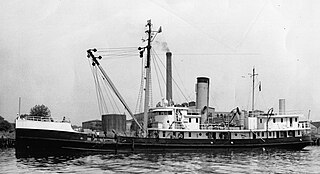
USCGC Lilac (WAGL/WLM-227) is a former Coast Guard buoy tender which is now a museum ship located in New York City. Lilac is America's only surviving steam-powered buoy tender, and is listed on the National Register of Historic Places.

Coast Guard Base Gloucester is the correct title for the former U.S. Coast Guard COTP Gloucester City, NJ as well as the now decommissioned U.S. Coast Guard Base Gloucester City, NJ.

USCGS Katherine Walker (WLM-552) is a Keeper-class coastal buoy tender of the United States Coast Guard. Launched in 1996, she has spent her entire career homeported at Bayonne, New Jersey. Her primary mission is to maintain 335 aids to navigation in New York Harbor, Long Island Sound, and surrounding waters. She is assigned to the First Coast Guard District.

USCGC Elm(WAGL-260/WLI-72260) was an inland buoy tender used maintain aids to navigation by the United States Coast Guard.
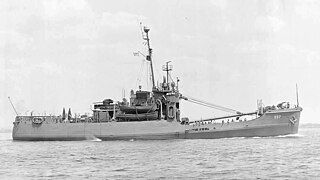
USCGC Planetree (WAGL/WLB-307) was a Mesquite-class seagoing buoy tender operated by the United States Coast Guard. She served during World War II, the Korean War, and the Vietnam War, as well as in a variety of domestic missions.

USCGC Elderberry (WLI-65401) is an inland buoy tender of the United States Coast Guard. She is based at Petersburg, Alaska and is responsible for maintaining aids to navigation. Her efforts are focused on waterways that are especially shallow or restricted.

USCGC James Rankin (WLM-555) is a Keeper-class coastal buoy tender of the United States Coast Guard. Launched in 1998, she is home-ported at the Coast Guard Yard in Baltimore, Maryland. Her primary mission is maintaining 361 aids to navigation in Upper Chesapeake Bay and its tributaries including the Eastern Shore of Maryland, the Potomac River, and the Annapolis area. Secondary missions include marine environmental protection, light icebreaking, search and rescue, and security. She is assigned to the Fifth Coast Guard District.
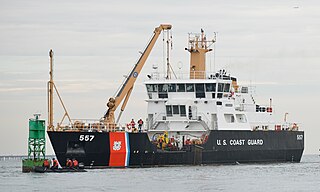
USCGC Frank Drew (WLM-557) is a Keeper-class coastal buoy tender of the United States Coast Guard. Launched in 1998, she is home-ported in Portsmouth, Virginia. Her primary mission is maintaining over 300 aids to navigation in lower Chesapeake Bay, the rivers that flow into it, and a portion of the North Carolina Coast. Secondary missions include marine environmental protection, light icebreaking, search and rescue, and security. She is assigned to the Fifth Coast Guard District.

USCGC William Tate (WLM-560) is a Keeper-class coastal buoy tender of the United States Coast Guard. Launched in 1999, she is home-ported in Philadelphia, Pennsylvania. Her primary mission is maintaining over 260 aids to navigation on the Delaware River, in Delaware Bay and in nearby waterways. Secondary missions include marine environmental protection, search and rescue, and security. She is assigned to the Fifth Coast Guard District.
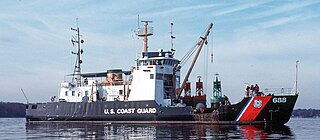
The Red class consisted of five coastal buoy tenders designed, built, owned, and operated by the United States Coast Guard. This was the first new class of buoy tenders built after World War II. It was designed to work in coastal waterways and the major rivers which fed them such as New York Harbor, Chesapeake Bay, and San Francisco Bay. Their primary mission was maintaining aids to navigation, with secondary missions of search and rescue, light icebreaking, law enforcement, and marine environmental protection.
USCGC Red Beech (WLM-686) was a Red-class coastal buoy tender designed, built, owned, and operated by the United States Coast Guard. She was launched in 1964 and homeported at Governors Island, New York. Her primary mission was maintaining 250 aids to navigation along the Hudson River, East River, Raritan River, Kill Van Kull, Arthur Kill, and throughout New York Harbor. Her secondary missions included search and rescue, light icebreaking, law enforcement, and marine environmental protection. Red Beech was initially assigned to the 3rd Coast Guard District, but was later moved to the 1st Coast Guard District when the 3rd was absorbed in a reorganization.
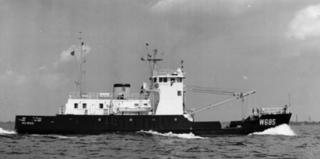
USCGC Red Wood (WLM-685) is a Red-class coastal buoy tender that was designed, built, owned, and operated by the United States Coast Guard. She was launched in 1964 and homeported at New London, Connecticut for most of her career. In March 1996 she moved to Philadelphia where she replaced the decommissioned USCGC Red Oak. Her primary mission while based in New London was maintaining over 200 aids to navigation from Watch Hill, Rhode Island to Execution Rocks at the west end of Long Island Sound. She also provided fuel and water to several lighthouses including the Falkner Island Lighthouse. Her secondary missions included search and rescue, light icebreaking, law enforcement, and marine environmental protection. Red Wood was initially assigned to the 3rd Coast Guard District, but was later moved to the 1st Coast Guard District when the 3rd was absorbed in a reorganization.

USCGC Red Birch (WLM-687) is a Red-class coastal buoy tender that was designed, built, owned, and operated by the United States Coast Guard. She was launched in 1965 and initially homeported at San Francisco. Her primary mission was maintaining 160 aids to navigation in San Francisco, San Pablo, and Suisun Bays, and in the San Joaquin River. Red Birch also brought supplies to the Farallon Island lighthouse. In 1976 the Coast Guard reassigned her to Baltimore, Maryland, where she spent the rest of her career. There she maintained over 300 aids to navigation including several lighthouses. Her secondary missions included search and rescue, light icebreaking, law enforcement, and marine environmental protection.

USCGC Red Cedar (WLM-688) is a Red-class coastal buoy tender that was designed, built, owned, and operated by the United States Coast Guard. She was launched in 1970 and homeported in Norfolk, Virginia. Her primary mission was to maintain over 400 aides to navigation in Chesapeake Bay, Tangier Sound, the Potomac, Rappahannock, York, and James Rivers, and other nearby waterways. Her secondary missions included search and rescue, light icebreaking, law enforcement, and marine environmental protection. She was assigned to the 5th Coast Guard District.


















